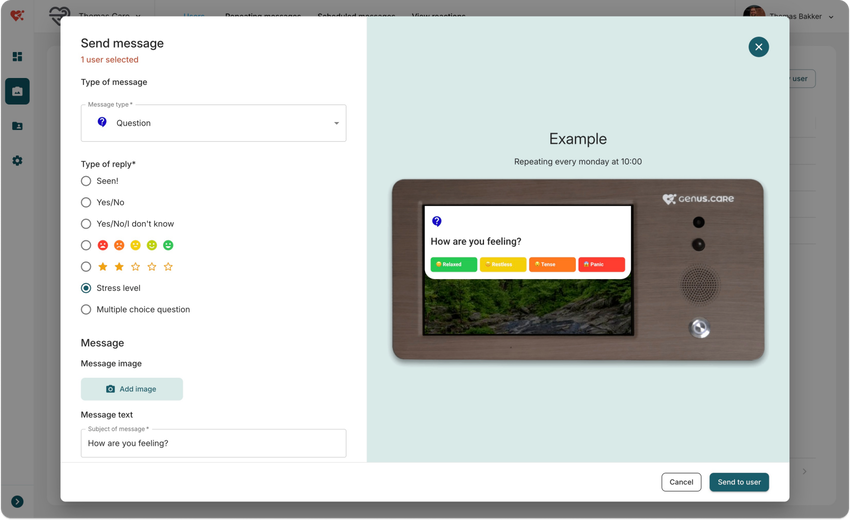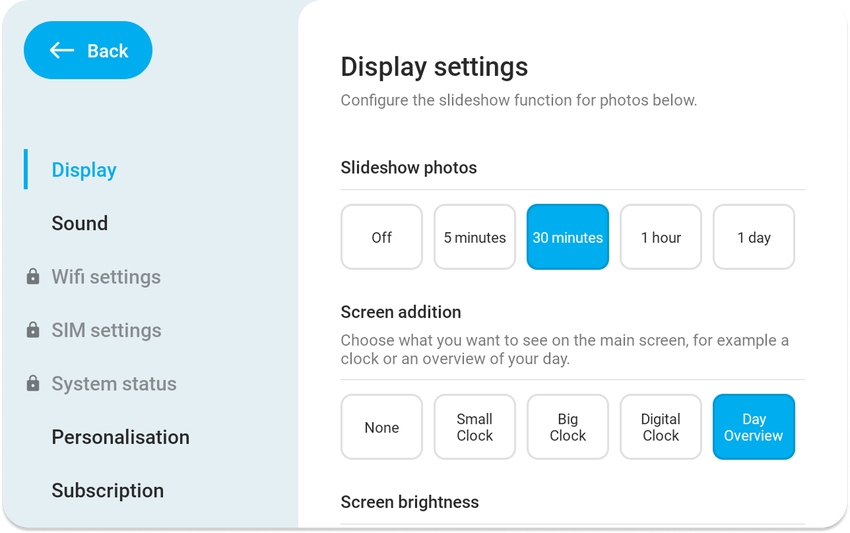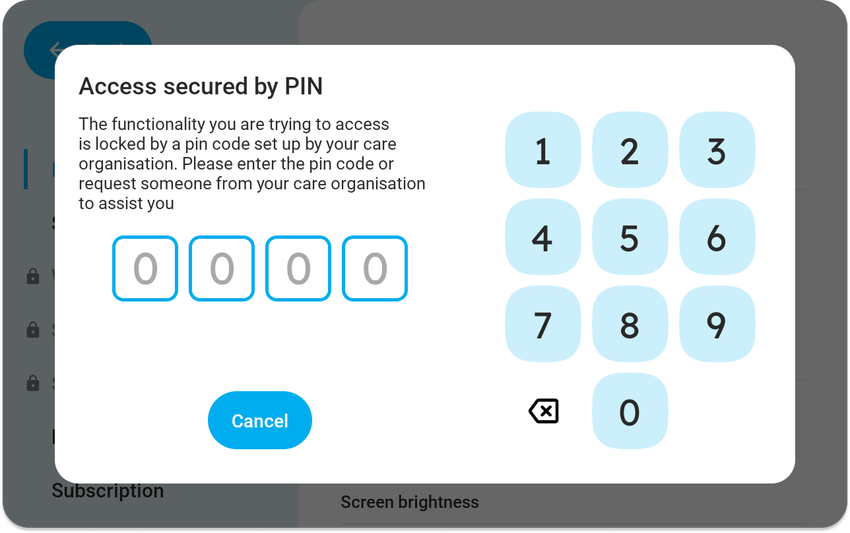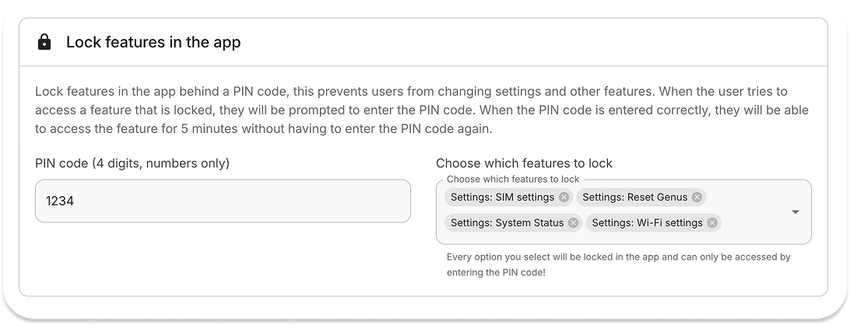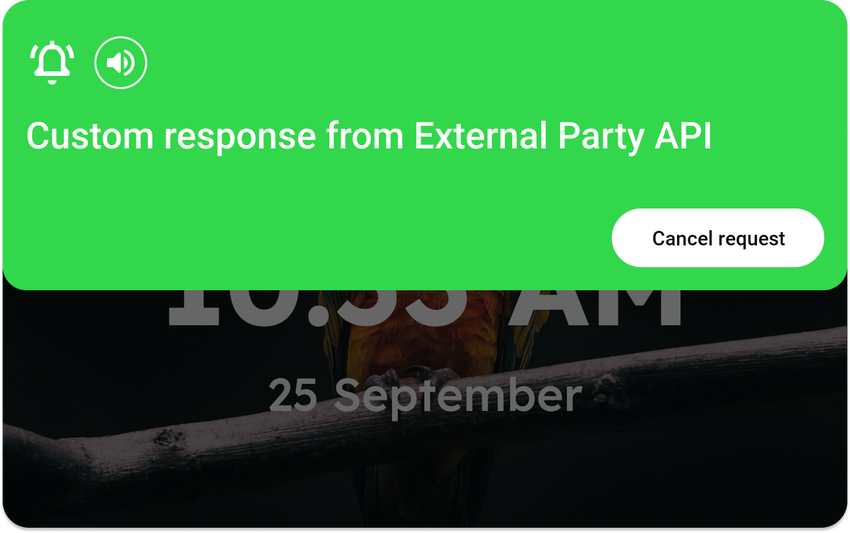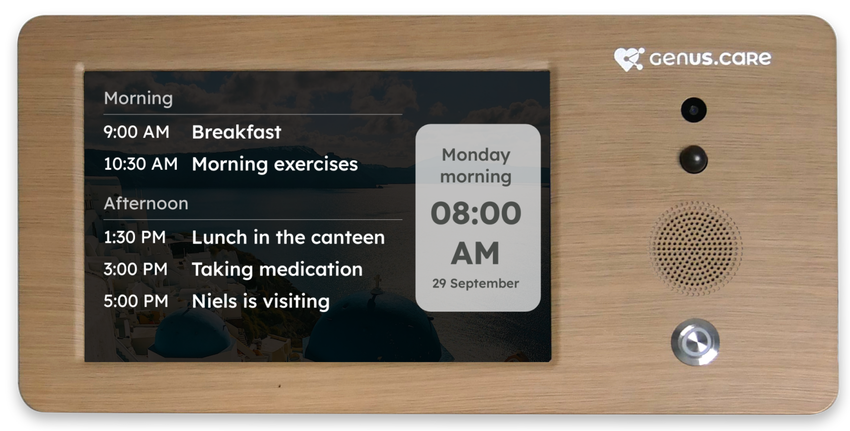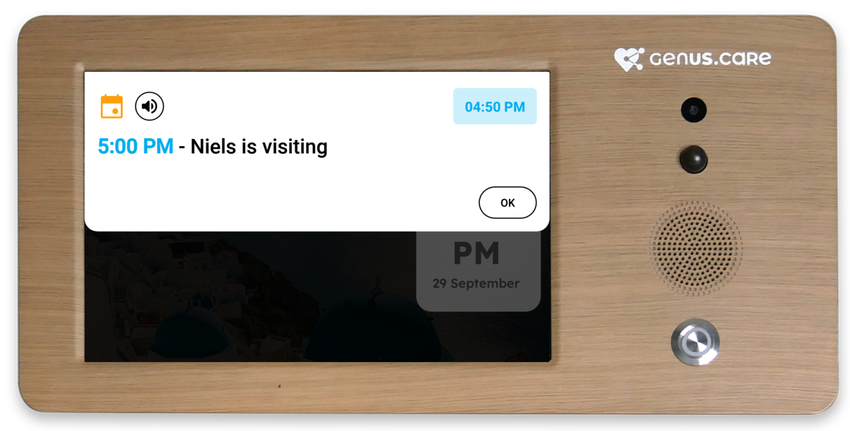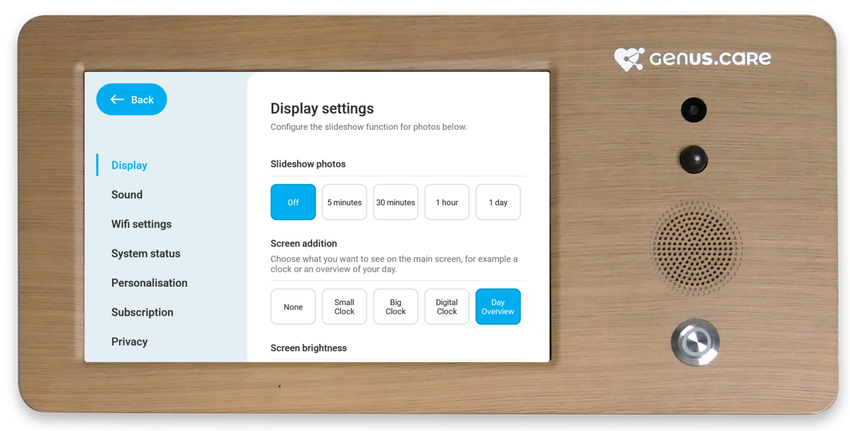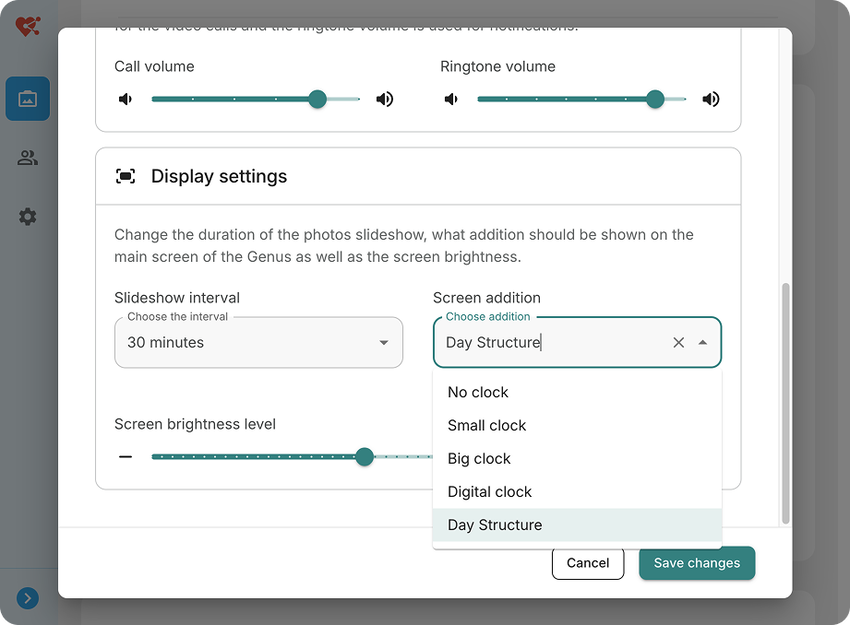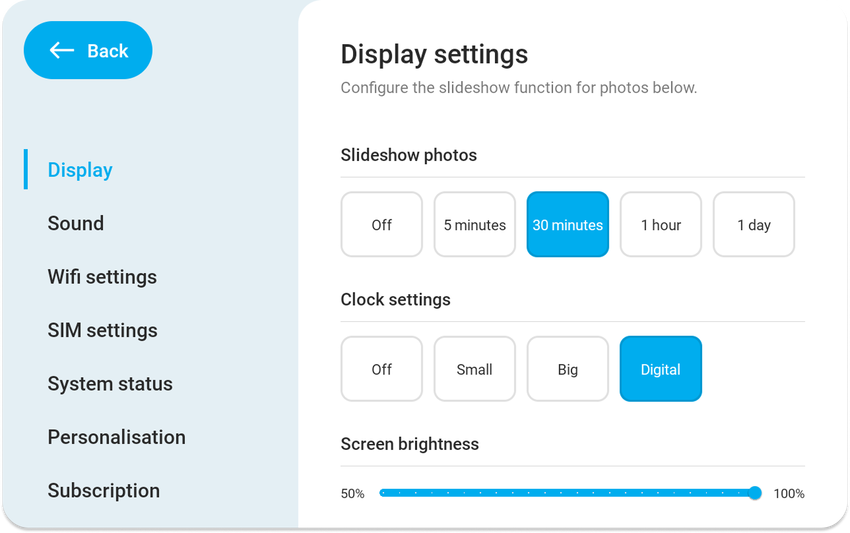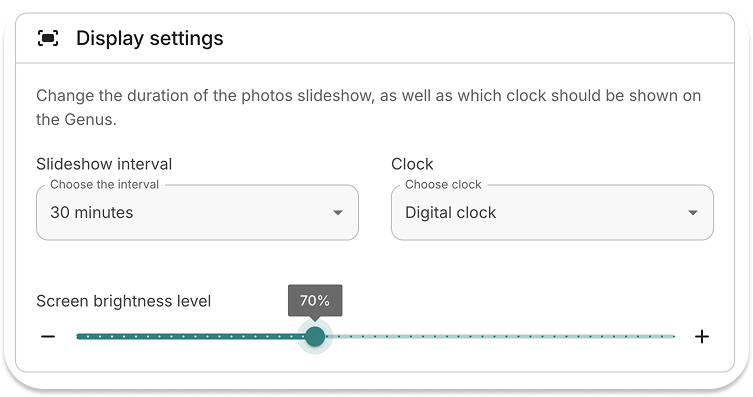In addition to locking specific UI elements on the Genus device, you can now hide them completely.
This behaviour can be configured directly in the Community Portal, giving you more control over the user interface and experience.
For example, if your organisation doesn't want to use the Call Me functionality, you can hide the Call Me button in the photo overlay and in the main menu.

Other Genus updates
- Greek translations have been refined


